The Ultimate Guide to Creating a Debt Repayment Plan
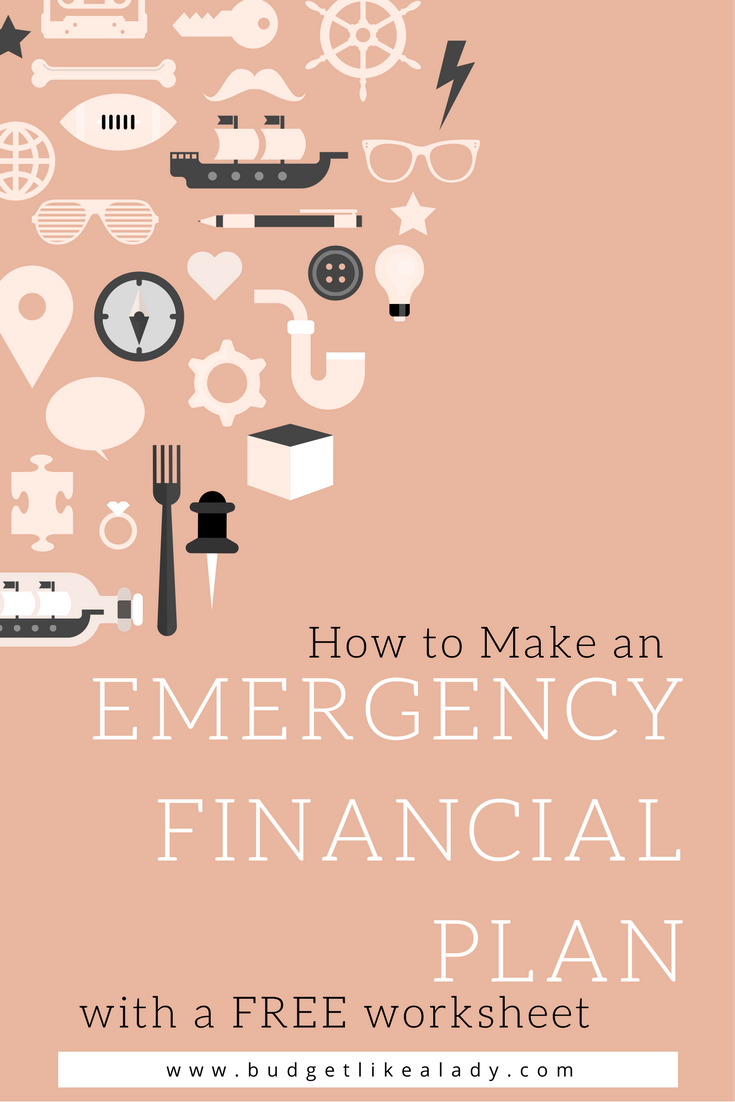
How to Make an Emergency Financial Plan
November 29, 2016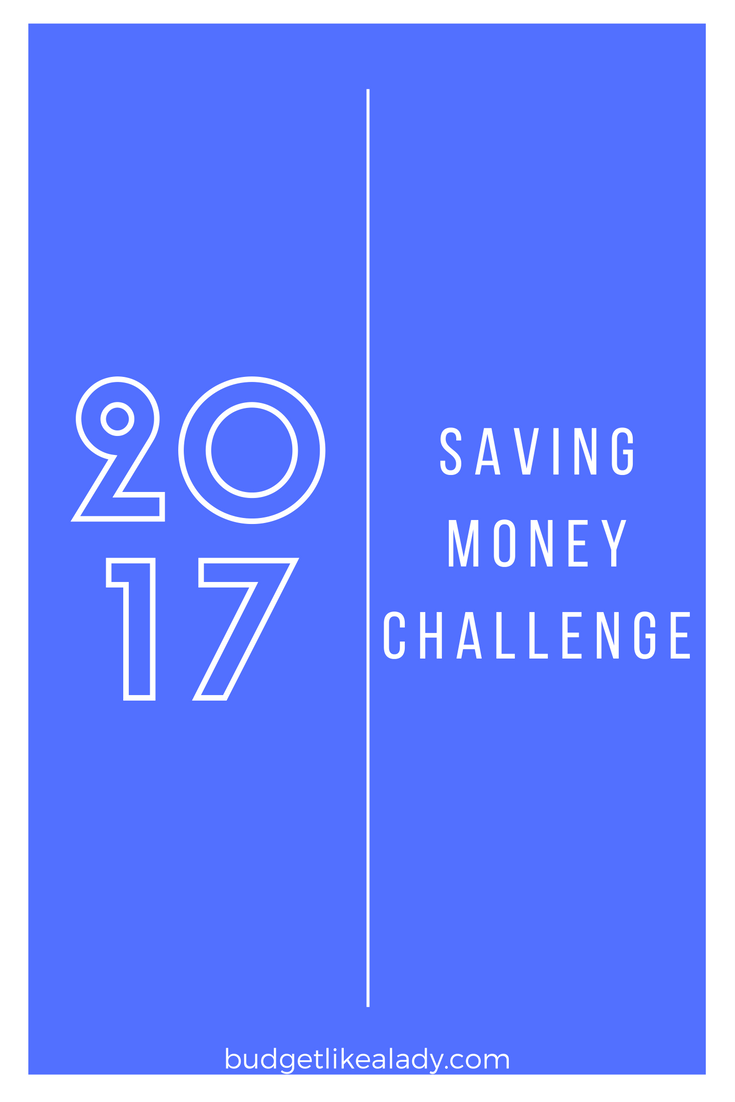
2017 Saving Money Challenge by Income
December 13, 2016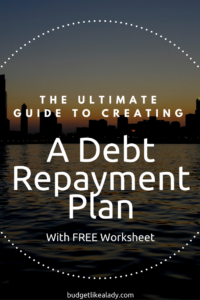
Let’s face it, getting into debt is too easy and getting out of debt is a challenge. I know when I was getting out of debt (read my debt story). I thought I was doing everything right;making my debt payments on time and paying a little extra on all of my debts. There was no plan or strategy for getting out of debt. I thought debt was something that everyone had and it was a part of being an adult.
I wasn’t serious about getting out of debt. When I realized that there is such a thing as being debt-free, I created a debt repayment plan to eliminate all of my debt. This plan worked for me and my family, I am currently debt-free except for my mortgage (working on it). I am sharing with you the same worksheet I have created and used to get myself out of debt. I hope you will find it beneficial.
What is a Debt Repayment Plan?
A debt repayment plan is a strategy to pay off all of your creditors, including family members. Usually, it is easier to get a loan from mom and dad versus a bank. When we get the loan from mom and dad, paying them back goes on the back burner. That needs to change (read my post about why I don’t loan money). Just because mom and dad can’t ruin our credit doesn’t mean money can ruin/change the relationship.
Snowball Method
The key to paying down debt is using the snowball method. First you must budget how much you are going to pay on your debt every month. I recommend 5% to 15% of your monthly income only for debt repayment.
Focus on your debt one creditor at a time starting with the smallest balance. Starting with the smallest balance will help eliminate creditors faster. While paying off the smallest balance, only pay the minimum balances on the rest of your debts. Any extra pennies you can put toward your current debt priority will help.
List All Debt
Now that you better understand my definition of a debt repayment plan, let’s get started becoming debt –free. Starting at ground zero, we need to list all debts; this includes family debts and bills that are in collections. I have created a worksheet that has helped me and it is available for free download in The Vault. Print a worksheet for each creditor. Keep these papers is a handy place because you will be using them every month.
Using the Debt Repayment Plan Worksheet
- Prioritize – Label each debt with a sequence of priority. The smallest balance being top priority (#1) and the largest balance being least priority. The current debt priority gets all of the extra payment money while all other debts receive minimum payment.
- Credit Type – Categorize the debt to better understand who you owe. This could be categorized as credit card, student loan, personal loan, car loan, past due bill, family loan, payday loan, etc.
- Interest Rate – This was an eye opener for my because I did not know my interest rates were so high. If you have a high interest rate, it is best to call and negotiate a smaller rate. Yes, you can do that!
- Payment – Know the minimum payment of your debt. Using the snowball method you will be paying the minimum payment until the debt becomes a priority.
- Goal Payoff Date – When do you see yourself being free from this debt? How are you going to celebrate your freedom? I am a firm believer in mini celebrations for each debt payoff. Treat yourself to something special, that is reasonably price, and won’t cause more debt.
- Due Date – What day of the month is this debt due? Usually, creditors consistently have their bill due the same time every month. Does this date work for you? Does is line up with a payday so you know you have the money? If not, call and request to change your due date. Yes, you can do that too!
- Starting Balance – How much do you owe right now? This will come in handy to let you know how far you have come in your debt repayment journey.
- Date and Balance – This is the date you paid the creditor and the balance on the statement received. You will track every time you made a payment to the creditor to see your progress.
- Payment Amount and Current Balance – This is the amount you paid to the creditor and the current balance after you have paid. In other words, BALANCE – PAYMENT AMOUNT = CURRENT BALANCE.
I hope this worksheet helps you create your own debt repayment plan. Keep these sheets accessible so you can stick with your plan. Does your debt still seem overwhelming?
Proverbs 22:7 – The rich rules over the poor, and the borrower is the slave of the lenders.
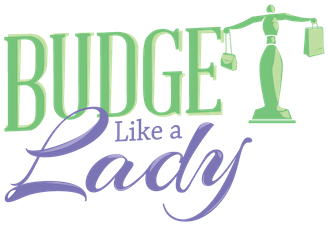
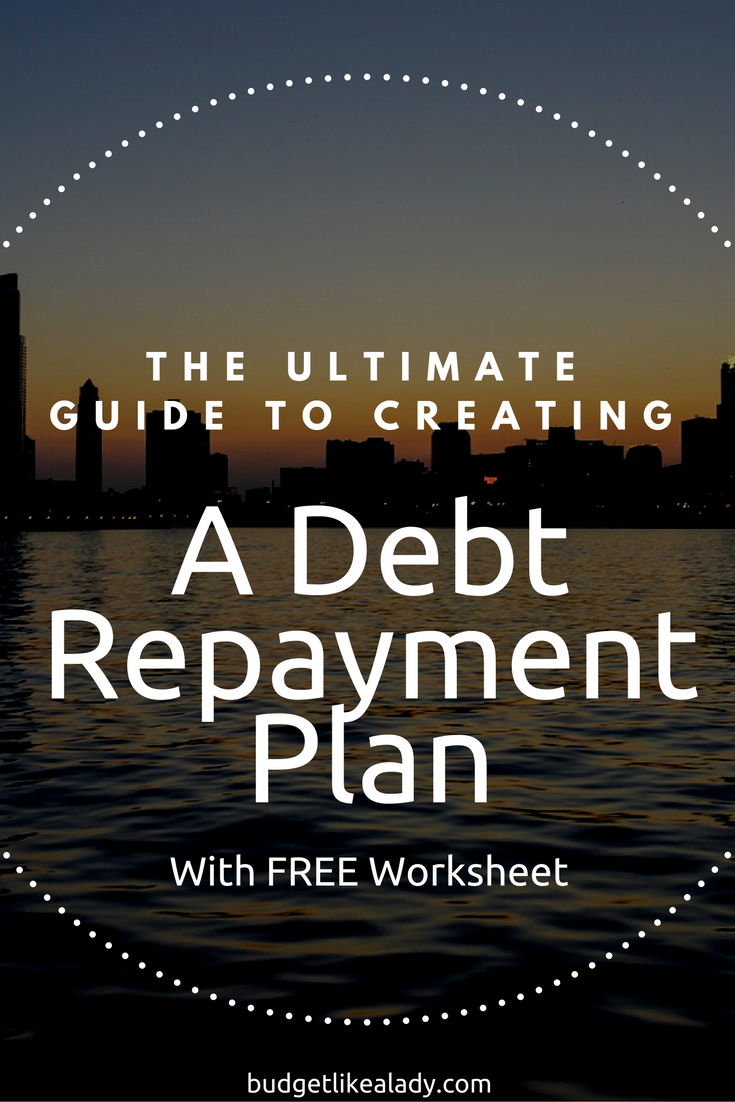
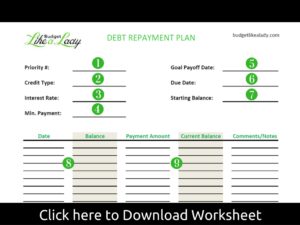
2 Comments
Love your website,, thank you SO much!
I cannot download your Debt Repayment Worksheet.
I’ve signed up for your email, but when I try to download it says I have already signed up for your emails!
Which I have, but can’t seem to get this worksheet.
Thank you so much,,
Marsha
Hi Marsha, thanks for visiting! I apologize for the inconvenience. Can you send me your email and I will get the access to you for the free downloads? My email is nicole@budgetlikealady.com
Happy downloading!